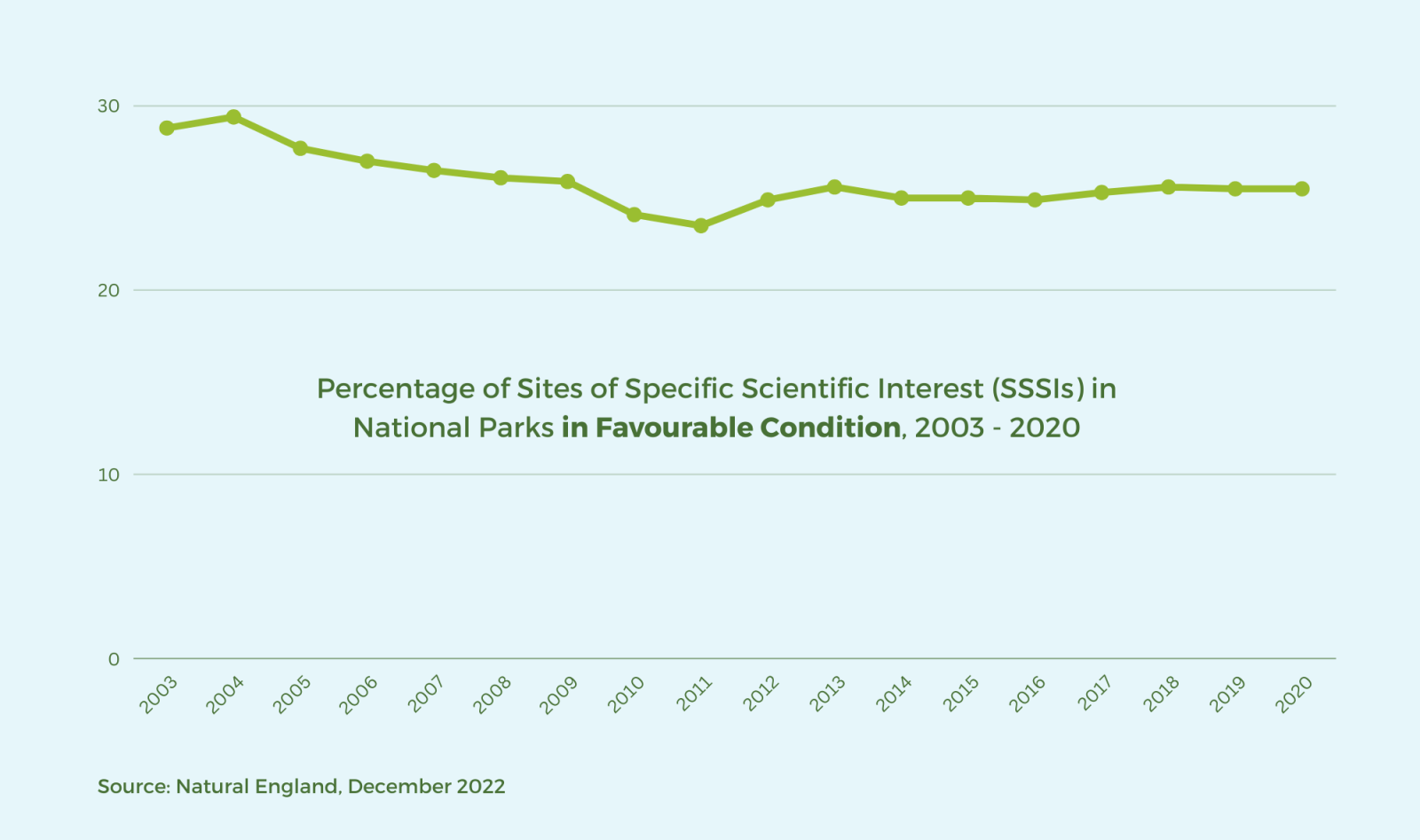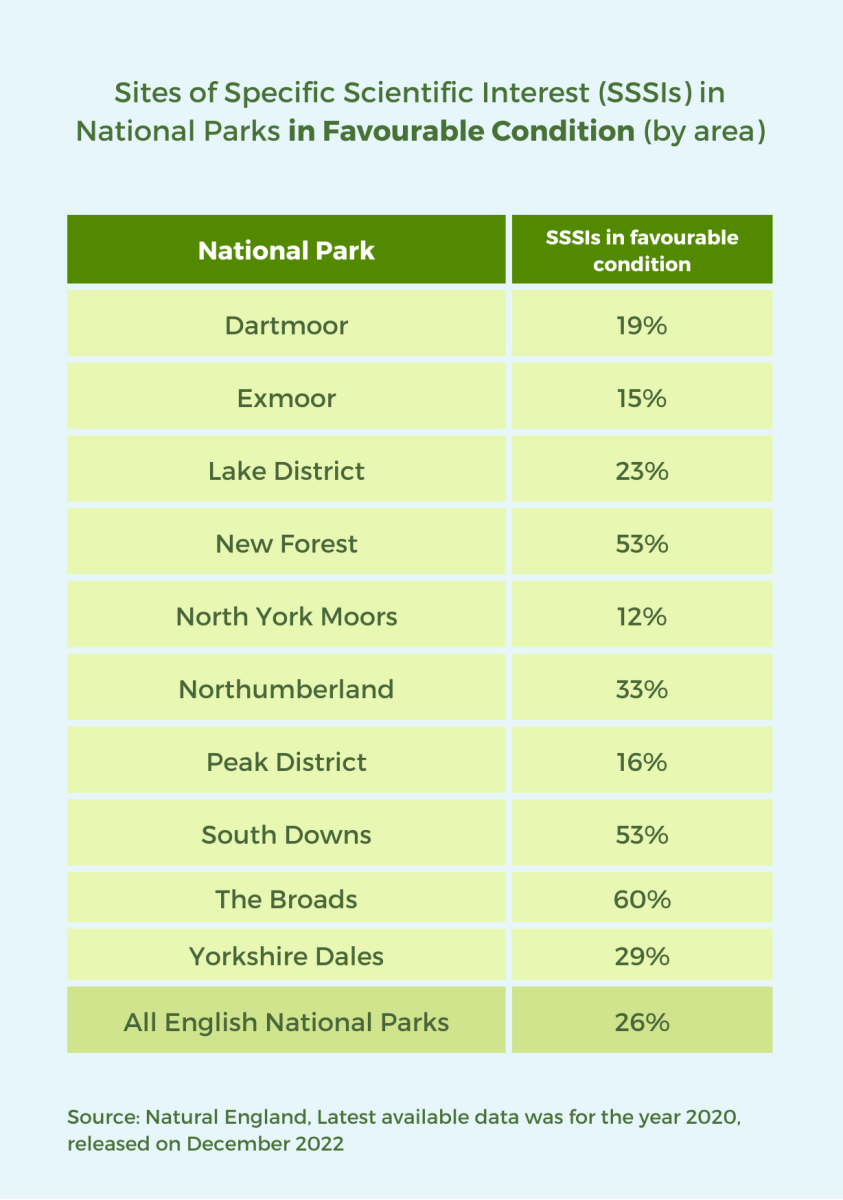New data shows why nature recovery legislation is so urgently needed in National Parks
Natural England’s latest data shows that the condition of SSSIs (Sites of Special Scientific Interest) in National Parks continues to lag behind the rest of the country.
National Parks should be exemplars for nature and yet only around a quarter of the SSSIs in these areas are in ‘favourable condition’, compared to a national average of 38%. Our analysis of latest data from Natural England shared with us last week, shows worrying trends over the longer-term, with results getting worse, not better over time (with a high of 29% of SSSIs in National Parks in favourable condition in 2004, compared with 26% in 2020, the latest year data is available for).

There is also significant variation between National Parks: whilst 60% of SSSI (by area) in The Broads are in favourable condition, it’s just 12% in the North York Moors.

It is particularly concerning that there has been barely any improvement since the last time we undertook detailed analysis of these figures for our Raising the Bar report in 2018, despite the various different initiatives since then which highlight the key role the National Parks have to play in tackling the nature and climate emergencies. Nearly five years on from the landmark 25 Year Environment Plan in 2018 and more than three years after the Glover Landscapes Review tabled concrete recommendations, we are still lacking the long-promised concerted Government action needed to drive increased ambition on nature recovery in National Parks.
As Governments from around the world meet this week to discuss protecting 30% of land and sea for nature by 2030 (the ‘30×30’ target) – supported by this Government – it’s clear delivering this target will require a step-change in SSSI condition in National Parks. As we, with Wildlife and Countryside Link highlighted in the recent 30×30 progress report, significant changes are needed to ensure National Parks can make more of a contribution to this target. The Glover Review made recommendations on this – including essential legislation amendments – and earlier this year the Government committed to taking forward those recommendations. But, almost one year on, we are still waiting for that to happen. As these latest SSSI figures show, Government can’t delay any longer if its serious about tackling the nature crisis.
While these figures are hugely disappointing, they don’t even tell the whole story. This is partly because the data simply isn’t available for many SSSI sites. As Link reports, only 27% of SSSIs have been visited for monitoring purposes in the last six years. Without regular monitoring to assess their condition, it’s impossible to tell whether SSSIs are improving or not. But if we really want to understand the true state of nature in our National Parks, we need to look beyond the individual sites, and consider ways of assessing nature’s recovery across the wider landscape, including through assessing the extent and condition of a wide range of priority habitats such as hedgerows, grasslands and wetlands.
Right now, with amendments tabled in the Levelling Up Bill, there is a clear chance for this Government to show its real intentions for driving nature recovery. Ministers have previously said that new powers are absolutely necessary for achieving 30×30. Government must now get on and deliver those powers.
That’s why we’ve written a letter to the Prime Minister, co-signed by 46 other organisations, calling on him to take a step forward for nature at home while the UK makes the case for an ambitious global approach at COP15 this week.
